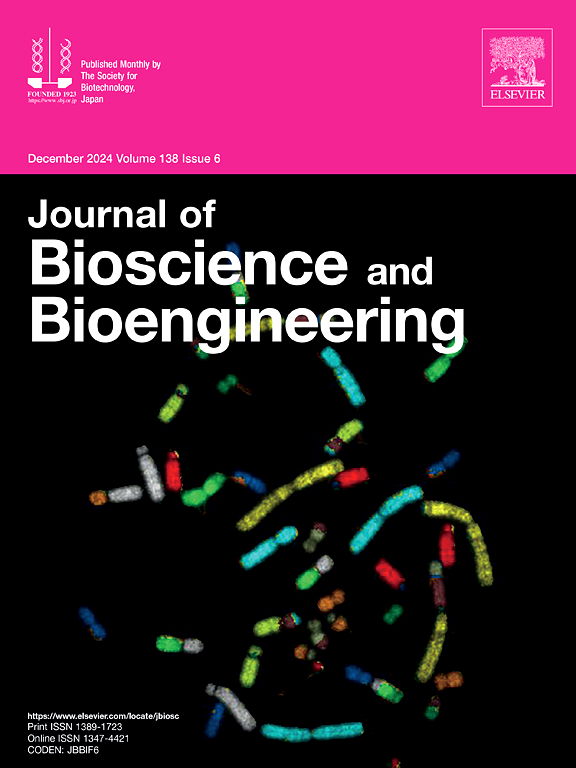Metabolomics-based investigation of the differences between traditional and modern soy sauce
IF 2.9
4区 生物学
Q3 BIOTECHNOLOGY & APPLIED MICROBIOLOGY
引用次数: 0
Abstract
Soy sauces can be classified into three categories based on the production method used: honjozo, kongojozo (mixed-brewing, amino acid-decomposed), and kongo (mixed, amino acid-decomposed) soy sauces. Although differences in flavor between traditional (honjozo) and modern (amino acid-decomposed) soy sauces are clear, knowledge of the differences in compound profiles and the relationship between these and the sensory characteristics that affect soy sauce quality is limited. Therefore, this study aimed to investigate the differences between traditional and modern soy sauce compounds using metabolomic analysis, and to investigate the compounds that may be correlated with differences in flavor. Non-targeted gas chromatography/mass spectrometry (GC/MS) metabolomics analysis was performed on nine traditional and six modern soy sauces to annotate 239 soy sauce compounds. Principal component analysis suggested that the production methods used formed clusters that affected the types and amounts of soy sauce compounds, and that the production method had a greater effect on soy sauce composition than did the aging barrels or type of soybean used. Traditional soy sauce was characterized by alcohols and esters, whereas modern soy sauce was characterized by pyrazines. A sensory evaluation revealed that traditional soy sauce was characterized by bitterness and astringency, whereas modern soy sauce was characterized by sweetness and viscosity, suggesting that the method of soy sauce production influences flavor differences. This is the first study to comprehensively characterize the effects of production methods, aging barrels, and soybean types on soy sauce compounds and how these compounds contribute to differences in flavor.
基于代谢组学的传统酱油与现代酱油差异研究。
酱油根据制作方法可以分为honjozo、kongojozo(混合酿造、氨基酸分解)和kongo(混合、氨基酸分解)三大类。虽然传统酱油(本酒酱油)和现代酱油(氨基酸分解酱油)在风味上的差异是显而易见的,但对复合结构的差异以及这些差异与影响酱油质量的感官特征之间的关系的了解是有限的。因此,本研究旨在通过代谢组学分析来研究传统酱油和现代酱油化合物之间的差异,并研究可能与风味差异相关的化合物。对9种传统酱油和6种现代酱油进行了非靶向气相色谱/质谱(GC/MS)代谢组学分析,对239种酱油化合物进行了注释。主成分分析表明,不同的生产方式对酱油成分的类型和数量有一定的影响,生产方式对酱油成分的影响大于陈化桶或大豆类型。传统酱油以醇类和酯类为特征,现代酱油以吡嗪类为特征。感官评价结果表明,传统酱油以苦味和涩味为主,而现代酱油以甜味和粘性为主,说明酱油的制作方法影响了风味的差异。这是第一个全面描述生产方法、陈酿桶和大豆类型对酱油化合物的影响以及这些化合物如何导致风味差异的研究。
本文章由计算机程序翻译,如有差异,请以英文原文为准。
求助全文
约1分钟内获得全文
求助全文
来源期刊

Journal of bioscience and bioengineering
生物-生物工程与应用微生物
CiteScore
5.90
自引率
3.60%
发文量
144
审稿时长
51 days
期刊介绍:
The Journal of Bioscience and Bioengineering is a research journal publishing original full-length research papers, reviews, and Letters to the Editor. The Journal is devoted to the advancement and dissemination of knowledge concerning fermentation technology, biochemical engineering, food technology and microbiology.
 求助内容:
求助内容: 应助结果提醒方式:
应助结果提醒方式:


